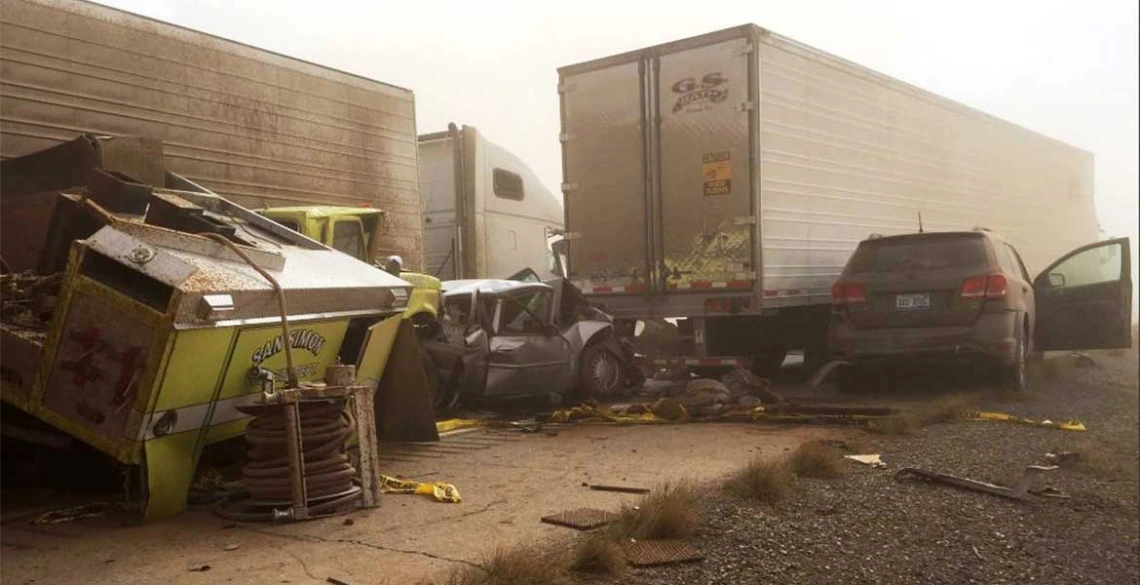Road Runner: UA Students' Tool Could Be Key Part in Dust Storm Research
Mechanical engineering student Ruby O'Brien-Metzger is part of a team of scientists researching what soil types and wind conditions cause blowing dust.

Dust storms on Interstate 10 near U.S. 91 on April 25 and 28, 2016, forced the closure of I-10 in Cochise County. A San Simon rescue truck and a DPS patrol car were destroyed when they were struck by tractor-trailer trucks. (Photo: Arizona Department of Public Safety 2016)
Dust storms are coming.
And when dust storms come, they can bring blinding conditions, creating a hazard for motorists.
But what if meteorologists could predict what regions are particularly susceptible to these dangerous storms by the type of soil in the area?
Students at the University of Arizona are conducting research to figure out just what soil types and wind conditions cause these sometimes deadly storms.
Ruby O’Brien-Metzger, a mechanical engineering senior, is part of the team that has gone out to areas like Picacho Peak equipped with a tool to conduct the research.
Using their portable dust generator, a machine weighing about 50 pounds, they measure the threshold friction velocity, which is simply the rate of wind speed needed to stir up that particular soil.
“It’s like a mini wind tunnel inside of this pot,” O’Brien-Metzger said. “So really we’re looking at the wind speed at which dust production begins.”
The device is easily portable, unlike a regular wind tunnel, which would take more work to set up. The device is powered by two car batteries and can go anywhere in the field.
At Picacho Peak, the $800 tool helped the team find that it takes a wind speed of only 10 mph to cause blowing dust, depending on whether the soil is crusted or rocky.

